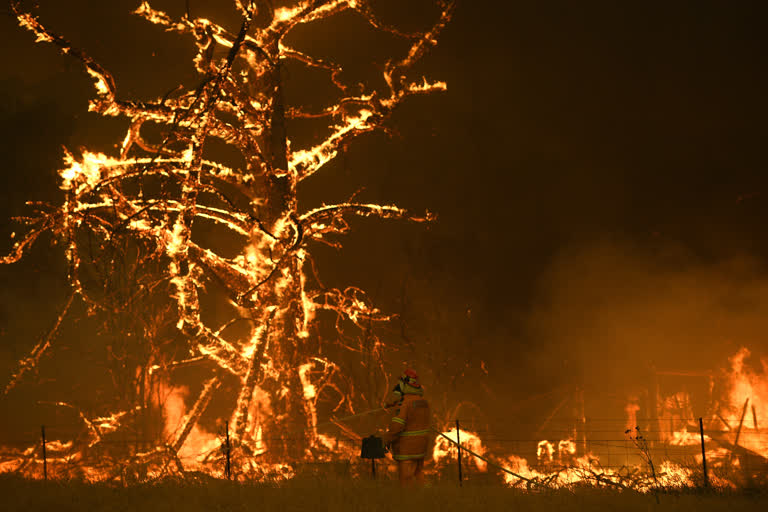Sydney: Thousands of tourists have been given less than 48 hours to evacuate fire-ravaged coastal communities as Australia braces for a heatwave Saturday expected to fan deadly bushfires.
Catastrophic blazes ripped through swathes of the continent's south-east on New Year's Eve, killing at least eight people and stranding holidaymakers as seaside towns were ringed by flames.
Thousands of tourists have been given less than 48 hours to evacuate fire-ravaged coastal communities as Australia braces for a heatwave Saturday. The New South Wales (NSW) Rural Fire Service on Thursday morning declared a "tourist leave zone" stretching about 200 kilometres (124 miles) from the popular holiday spot of Bateman's Bay along the usually picturesque south-east coast to neighbouring Victoria state, where people are also being urged to evacuate fire-threatened areas. Visitors are being warned to leave before Saturday, which is forecast to bring gusting winds and temperatures soaring above 40 degrees Celsius (104 degrees Fahrenheit). That weather will create dangerous fire conditions that officials say will be as bad -- if not worse -- than Tuesday, Australia's deadliest day of fires in a months-long bushfire crisis. Many tourists and residents spent two nights isolated with no electricity or telecommunications, and dwindling food supplies, before authorities on Thursday deemed some roads out of the region temporarily safe to use. NSW Transport Minister Andrew Constance told public broadcaster ABC it would be the "largest evacuation of people out of the region ever", with thousands preparing to leave ahead of another "terrible" day of fires. NSW Rural Fire Service deputy commissioner Rob Rogers said that firefighters were unable to extinguish or even control the raging blazes. "The message is we've got so much fire in that area, we have no capacity to contain these fires," he told ABC. "We just need to make sure that people are not in front of them." But with food and fuel supplies reportedly running short in many centres, there were concerns some would remain trapped. Authorities still have not been able to reach some rural communities, such as the town of Genoa in Victoria.
Read also: Australian cities snuffing fireworks as fire danger worsens
There are also mounting fears for five people still missing after the most recent blazes while the number of homes confirmed destroyed has topped 400, with that number expected to rise as firefighters reach devastated communities still isolated by flames.
Navy ships and military aircraft have been deployed alongside emergency crews to provide humanitarian relief and assess the damage.
This season's blazes have killed at least 18 people, destroyed more than 1,000 homes and scorched about 5.5 million hectares (13.5 million acres) -- an area bigger than Denmark or the Netherlands.
The unprecedented crisis has sparked street protests calling on the government to immediately act on climate change, which scientists say is creating a longer and more intense bushfire season.
Conservative Prime Minister Scott Morrison has come under increasing pressure for his actions, which included holidaying in Hawaii as the disaster unfolded and reiterating his support for Australia's lucrative -- but heavily polluting -- coal mining industry.
Read also: Raging wildfires trap 4,000 at Australian town's waterfront



